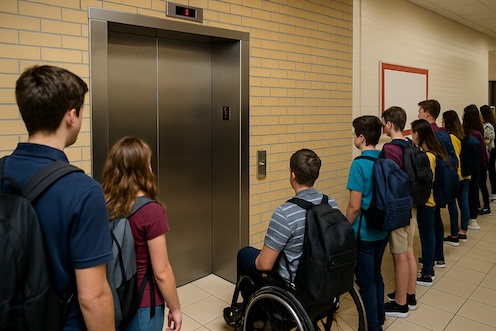At the beginning of the new semester, the new six story teaching building of the school was put into use, which was expected to alleviate congestion. Unexpectedly, within just a week, there were constant complaints: students were queuing up at the stairs and elevator entrances, wheelchair users found it difficult to climb upstairs, and older teachers were also complaining due to frequent climbing of stairs.
The mismatch between design and reality
This elevator has a rated load capacity of 800 kilograms and a speed of 60 meters per minute. The brochure indicates that it is suitable for small and medium-sized office buildings. The school therefore believes that the choice is reasonable. But it was only after being put into use that it was discovered that the number of people on campus far exceeded that of office scenes. During a ten minute break, hundreds of students gathered simultaneously, and the elevator area and corridors were congested, with waiting times exceeding five minutes.
Overload and early failures
Research shows that the elevator load during peak hours in middle schools in first tier cities often reaches 150% of the design value. Frequent start stop and high load operation lead to accelerated wear and tear of components. In just three weeks, this elevator experienced multiple shutdowns, seriously disrupting teaching. Although all indicators met national standards upon completion, problems emerged one after another after entering the service life: slow response of the control panel, chaotic instructions, frequent no-load operation, and nighttime noise affecting the lounge.
Blind spots in procurement
In fact, the school did not neglect the process - open bidding, comparison of three vendors, compliant pricing, and complete qualifications. But most purchasers lack professional judgment and can only rely on supplier templates. When weighing between "cost" and "compliance", solutions that truly meet the requirements of the scenario are often overlooked, and subsequent risks are also amplified.
A common phenomenon
According to data from architectural consulting firms, over 70% of campus elevator projects have "selection deviations" or "structural compromises", and nearly 40% have caused complaints within one year of use. The problem is not whether the purchase is expensive, but whether the actual usage needs were not included in the design evaluation in the early stages.
The True Meaning of Elevators
For densely populated and fast-paced campuses, choosing the right elevator is a guarantee for teaching order and safety. Ignoring this point will inevitably lay hidden dangers.

